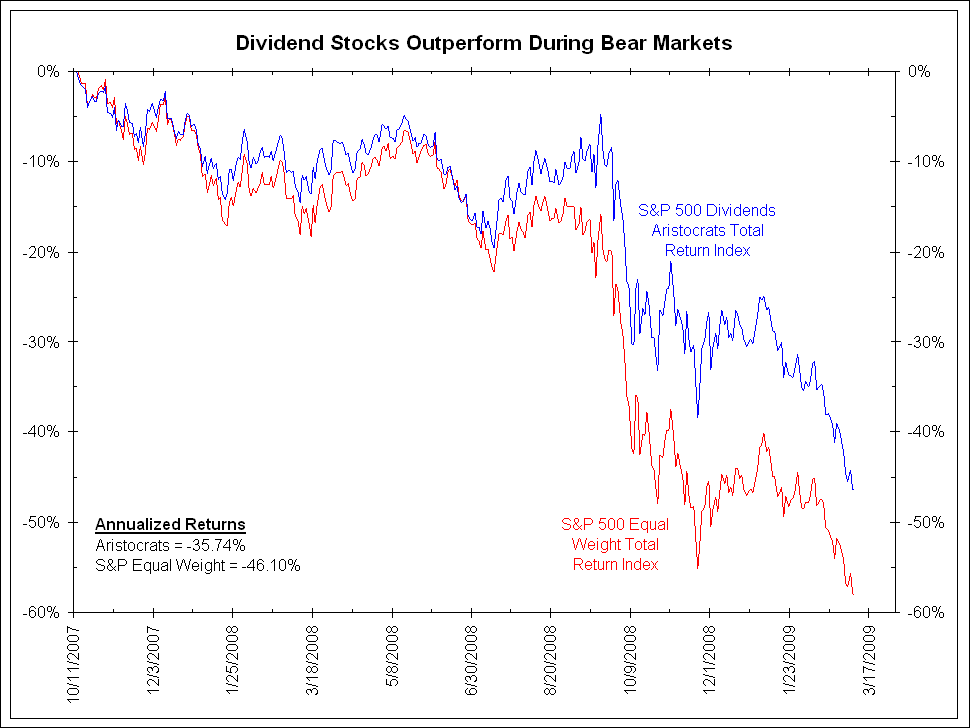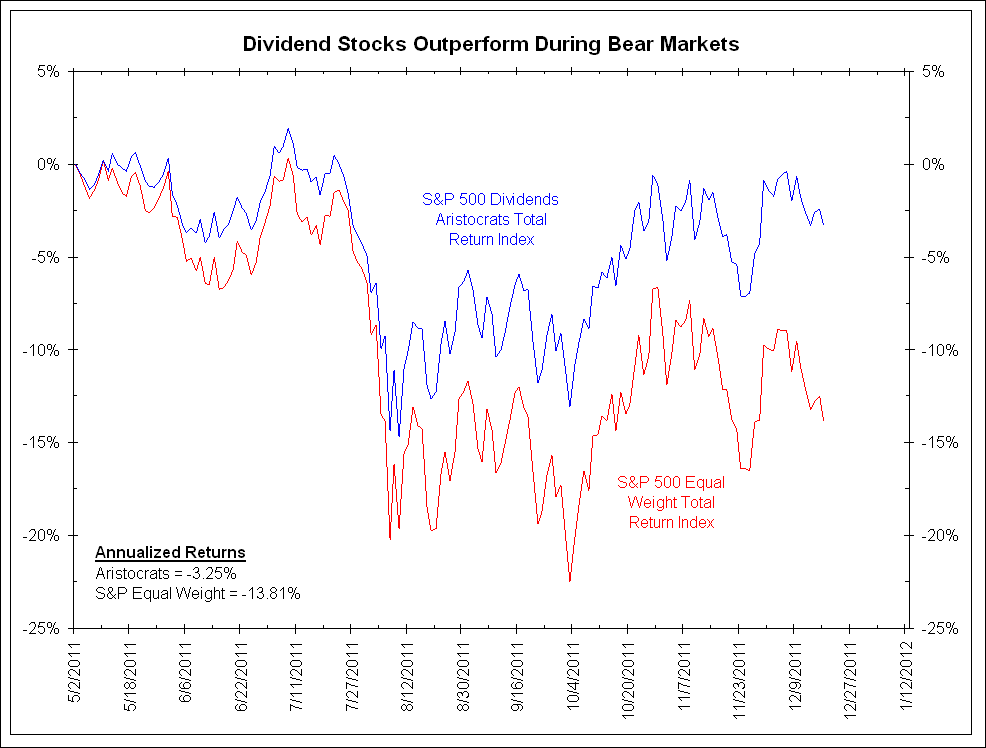The Wall Street Journal – Dividend Stocks Become the Heroes
This year, the 100 stocks in the Standard & Poor’s 500-stock index with the highest dividend yields are up an average of 3.7% before dividend payouts, according to Birinyi Associates. The 100 lowest-yielding stocks are down an average of 10%. Dividend yield is calculated by dividing a company’s annual per-share dividend by share price. In the third quarter, share-price returns on high-dividend payers exceeded those of lower-paying companies by 17 percentage points, AllianceBernstein calculates. Investors hungry for stock-price gains have been barreling into dividend-paying shares, long regarded as “widow-and-orphan stocks” because of their steady but stodgy performance. Some analysts say such stocks are the most “crowded” trade around these days. Investors have been dazzled by dividend yields of more than 4% on many utilities, household-goods manufacturers and telecommunications companies. That is twice as much as recent paltry yields on 10-year Treasurys. Dividend-stock fans say the unusually strong performance is likely to last as long as volatility driven by Europe’s debt crisis and the global economic fits and starts continues to grip financial markets. Stocks that pay steady dividends tend to fall less than others when times are tough.
Comment
We offered our thoughts on dividend-paying stocks in an October post:
In our current uncertain and volatile environment, investors are seeking safety. So, it should come as no surprise that dividend stocks have gained in popularity especially since many blue-chip stocks pay higher dividend yields.
However, any case for a new era of dividend investing may be a bit overstated. Dividend stocks should simply be viewed as a slightly less risky form of stock investing. As such, we should expect dividend-paying stocks to outperform during bear markets and underperform during bull markets.
By comparing the S&P Dividends Aristocrats Total Return Index and the S&P Equal Weight Total Return Index, we can see this is indeed the case. The S&P Dividends Aristocrats Index measures the performance of stocks in the S&P 500 that have consistently increased dividends for at least 25 consecutive years. The index is equally weighted, so we compare its total return to that of the S&P 500 Equal Weight Index.
During the bear market from October 11, 2007 to March 6, 2009, dividend-paying stocks outperformed the S&P 500 Equal Weight Index by 11.6%. On an annualized basis, dividend stocks returned -35.74% versus -46.10% for the S&P Equal Weight Index.
During the bull market from March 6, 2009 to May 2, 2011, dividend-paying stocks underperformed the S&P 500 Equal Weight Index by 42.4%. On an annualized basis, dividend stocks returned 44.38% versus 56.64% for the S&P Equal Weight Index.
Finally, during the bear market from May 2, 2011 through last yesterday’s close, dividend-paying stocks outperformed the S&P 500 Equal Weight Index by 10.56%. On an annualized basis, dividend stocks returned -3.25% versus -13.81% for the S&P Equal Weight Index.
To be sure that these past few bull/bear markets were the rule and not the exception, we also compared total returns of these two indices on all days when the S&P Total Return Index was up versus all days when the S&P Total Return Index was down. With data going back to the beginning of 1990, dividend-paying stocks returned an average of 66 basis points per day on days the stock market was up. The S&P Equal Weight Index returned an average of 77 basis points per day on those same days. On days the stock market was down, dividend-paying stocks returned an average of -67 basis points per day. The S&P Equal Weight Index returned an average of -80 basis points per day.
Rather than being concerned with reaching for yield, the charts and data above suggest dividend stocks outperform during bear markets and underperform during bull markets. However, if investors are savvy enough to know which way the market was heading in general, why even bother distinguishing between dividend-paying stocks and non-dividend-paying stocks?
Source: Arbor Research





What's been said:
Discussions found on the web: